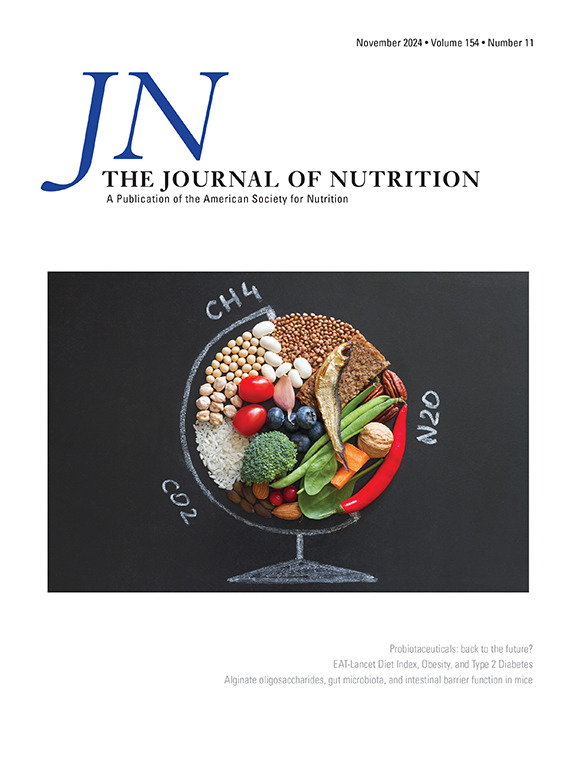Application-Based Bioelectrical Impedance Analysis Provides Accurate Body Composition Parameters in a More Cost-Efficient and Time-Efficient Way
IF 3.7
3区 医学
Q2 NUTRITION & DIETETICS
引用次数: 0
Abstract
Background
In clinical practice, there is an increasing demand for methods that provide accurate, precise, and real-time body composition measurements while reducing costs and data collection time.
Objectives
This study aimed to evaluate the validity of an application-based bioelectric impedance analysis (BIA) system for determining body composition compared with a standard BIA method.
Methods
A total of 109 individuals with type 1 diabetes (56 men and 53 women), aged 18–70 y, with a body mass index of 25.0–35.0 kg/m2 and glycated hemoglobin concentrations of 7.0%–9.0%, were recruited. Participants were randomly assigned to start with either the application-based BIA system or the standard method (A-wave BIA quantum-V) and then switched to the other method. Anthropometric parameters, blood pressure, and metabolic profiles were also assessed.
Results
The comparison between the 2 methods showed a negligible difference in resistance but a significant difference in reactance (–4.9%). The degree of consistency was excellent for both resistance [intraclass correlation coefficient (ICC) = 0.990, P < 0.001] and reactance (ICC = 0.903, P < 0.001), with individual differences falling within acceptable ranges. Furthermore, body composition parameters, including fat-free mass, fat mass, skeletal muscle mass, total body water, and extracellular water, showed only minor and nonsignificant differences between the 2 methods.
Conclusions
These findings suggest that the application-based BIA system is a valid and reliable tool for assessing body composition, offering healthcare professionals, including dietitians and nutritionists, a cost-effective and time-efficient alternative to standard BIA methods.
基于应用程序的生物电阻抗分析以更具成本效益和时间效率的方式提供准确的身体成分参数。
背景:在临床实践中,越来越多的方法需要提供准确、精确和实时的身体成分测量,同时降低成本和数据收集时间。目的:本研究旨在评价基于app的生物电阻抗分析(BIA)系统测定人体成分的有效性,并与标准BIA方法进行比较。方法:共招募109例1型糖尿病患者(男性56例,女性53例),年龄18 ~ 70岁,BMI为25.0 ~ 35.0 kg/m2,糖化血红蛋白水平为7.0 ~ 9.0%。参与者被随机分配使用基于应用程序的BIA系统或标准方法(A-Wave BIA Quantum-V),然后切换到另一种方法。还评估了人体测量参数、血压和代谢谱。结果:两种方法比较,电阻差异可忽略不计,但电抗差异显著(-4.9%)。结论:基于应用程序的BIA系统是一种有效可靠的评估身体成分的工具,为包括营养师和营养学家在内的医疗保健专业人员提供了一种具有成本效益和时间效率的替代标准BIA方法。
本文章由计算机程序翻译,如有差异,请以英文原文为准。
求助全文
约1分钟内获得全文
求助全文
来源期刊

Journal of Nutrition
医学-营养学
CiteScore
7.60
自引率
4.80%
发文量
260
审稿时长
39 days
期刊介绍:
The Journal of Nutrition (JN/J Nutr) publishes peer-reviewed original research papers covering all aspects of experimental nutrition in humans and other animal species; special articles such as reviews and biographies of prominent nutrition scientists; and issues, opinions, and commentaries on controversial issues in nutrition. Supplements are frequently published to provide extended discussion of topics of special interest.
 求助内容:
求助内容: 应助结果提醒方式:
应助结果提醒方式:


